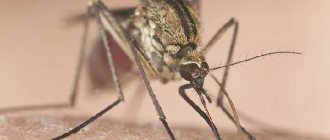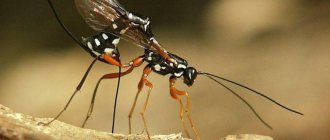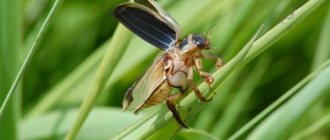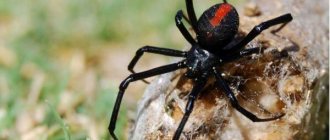Description of rats
Rats are the most common mammals of this family. They can be found anywhere on our vast Planet. Despite their belonging to the family, rats differ from mice not only in appearance, but also in their behavior. In addition, rats are much larger in size compared to mice. Their body is more developed, the muzzle is more elongated, and the nose is more elongated. The rat's eyes are relatively small, like beads.
Appearance
These representatives of the mouse family have a body structure characteristic of rodents, which is quite powerful and oval in shape. Adults grow from 8 to 30 cm in length, while their weight can range from 40 to 510 grams. There are species that differ markedly from their counterparts, depending on species characteristics, as well as on their habitat.
The rat's muzzle is pointed and elongated, with small eyes and ears. In most varieties, the tail is completely naked, covered with scales and sparse hairs. Black rats are distinguished by the fact that their tail is completely covered with thick black hair. As a rule, rats have a rather long tail, the size of which is commensurate with the length of the body, and sometimes exceeds this indicator. Although it should be noted that there are also short-tailed rats.
The jaws of this rodent are armed with pairs of incisors, which are noticeably larger than the teeth. The molars are arranged in dense rows, which allows the rodent to quickly and actively grind food. Between the incisors and molars, you can observe an area where teeth do not grow. Rats do not have fangs, although they are omnivorous mammals. A rat's incisors are constantly growing, which requires constant grinding, otherwise the animal will not be able to fully close its mouth. This is due to the fact that the incisors do not have roots. The front part of the incisors is much stronger than the back part, since it is covered with durable enamel. As a result, the grinding of the incisors does not occur evenly, and over time they acquire a chisel-like shape. The teeth of these animals are so strong that the rat can easily cope with obstacles in the form of brick or concrete, although they were originally intended by nature to obtain exclusively plant food.
Interesting to know! Rats have a fairly thick and dense coat, thanks to well-defined guard hairs. The color of the coat can be different, both grayish-brown and dark gray, with the presence of various reddish, orange or yellow shades.
Although rats have calluses on their paws, they are poorly developed. Due to the presence of calluses, many animals move quickly on any surface. This deficiency in rats is compensated for by tenacious and mobile toes. Therefore, rats can lead both a terrestrial and semi-arboreal way of life. They easily move through trees, so they build their nests in tree hollows or use ready-made nests of other animals and birds, left by them for various reasons.
Behavior and lifestyle
Rats are considered incredibly agile living creatures and incredibly resilient. For animals of this size, they run well, picking up speeds of up to 10 km/h, while overcoming obstacles up to 1 meter high. These rodents travel an average of 12 kilometers every day. They are excellent swimmers and divers, so they can easily catch fish. Without harming their health, rats can stay in water for up to 3 days, or even more.
Burrows abandoned by other animals, as well as artificial shelters and nests of various birds can serve as a refuge for rodents. If necessary, the rat is able to dig a hole for itself on its own.
Rats can easily lead an isolated lifestyle or form family groups, as well as territorial communities. A colony may contain several hundred individuals, which are subordinate to one dominant male and several dominant females. Each such group is capable of controlling an area of about 2 thousand square meters.
Rats have poor vision, characterized by a small viewing angle of about 16 degrees, so the rat constantly rotates its head in different directions, studying the space around it. It is believed that rats perceive the surrounding space in gray tones, and continuous darkness appears as red.
Interesting fact! The rat has a well-developed sense of smell and hearing, so animals are able to hear sounds with a frequency of up to 40 kHz.
Rodents are capable of distinguishing odors at short distances. It should be noted that they can withstand radiation up to 300 roentgens per hour without any problems.
How long do rats live?
If you take black rats, they live less than a year. When living in laboratories at various scientific institutions, rats live 2 times longer. The Guinness Book of Records contains information about the oldest rat, which managed to live for almost 8 years.
Sexual dimorphism
Upon reaching one and a half months of age, the animals’ sexual characteristics are fully formed. To determine whether it is a female or a male, it is enough to raise the tail to determine the structure of the animal’s reproductive system.
Males differ from females:
- By the presence of fairly large testicles, which can be detected if you lift the animal's tail.
- Males do not have nipples on their bellies like females. They are arranged in 2 rows.
- In males, the distance between the anus and the urethra is slightly greater.
- Males are stronger and more powerful, and they are also larger in size.
- Males have a pear-shaped body, while females have a graceful and elongated body shape.
- Males have denser and tougher fur, while females have smooth, soft and silky fur.
- Males are less aggressive than females.
- The urine of males has a sharper and more unpleasant odor.
As for newborn rat pups, it is almost impossible to determine their gender. Although experts know that males who have just been born have small spots between the anus and genitals. Over time, testicles appear in place of these spots.
Important point! According to experts, one pair of adult individuals in a couple of years is capable of producing offspring of up to 6 thousand cubs. Rats, having reached puberty, reproduce no less actively.
How and what to feed a rat correctly
Fruits, vegetables and greens
They must be present in the animal’s daily diet, because they contain many vitamins and microelements necessary for a balanced diet.
Animals love to chew cucumbers, celery or carrots . You can make a mix of vegetables, that is, a salad.
It is necessary to remove seeds from fruits.
Bananas must be ripe; green bananas should not be given. We should not forget that this fruit has a high calorie content.
Citrus fruits, pineapple and kiwi contain many acids and are likely to cause allergies.
When it comes to greens, rats prefer lettuce, parsley and dill. In the summer, leaves of dandelions, daisies, clover and plantain are excellent for feeding.
IMPORTANT! Poisonous plants are ferns, lilies of the valley, azaleas, tulips, daffodils, greens and leaves of tomato, potato, and tobacco. Most indoor plants pose a danger to rats.
Nuts, seeds and grains
Nuts and seeds contain essential protein, but giving them is often contraindicated as they can cause your pet to become overweight. You can give it directly in the shell; the animal will handle it just fine.
Cereals such as oats, rye, barley and millet can be given as grains, pre-washed, or sprouted, which contain important vitamin E.
You can cook porridge in water and without salt or sugar. Rats quite readily eat millet, rice, buckwheat, pearl barley and oatmeal (however, it is better to avoid it, as it can lead to unwanted weight gain).
There is no need to give hot or cold porridge. You can add a filler to it in the form of fruits, berries or a drop of oil (olive, flaxseed or cold-pressed pumpkin).
Fresh bread, pastries and soft cookies are not recommended. Crackers without additives are better suited.
Dried fruits
Dried fruits contain a large amount of vitamins and will appeal to any animal. But there are also disadvantages. Many of them are made using sugar, which is often not stated on the labels. For this reason, dried fruits should not be included often in the diet of rats.
IMPORTANT! Often dried berries and fruits contain seeds that need to be removed. They contain hydrocyanic acid, which is dangerous for rodents.
Where do you buy dried fruits for your rodent?
Mushrooms
Mushrooms are included in the list of undesirable foods, but very rarely they can be given, but only to a healthy and adult individual. They contain a lot of protein, but are difficult to digest.
Animal proteins
A necessary component for a balanced diet of decorative rats. Proteins of animal origin are necessary for normal growth and development of rodents and are involved in maintaining immunity.
Contained in eggs, dairy products, lean meat and fish, baby puree. In some cases, cat or dog food is used.
Meat and fish
Rats are not vegetarians by nature, so many breeders feed their pets meat and seafood.
You should not feed animals raw meat or seafood, as this can lead to serious diseases. Before feeding, they must be boiled without salt and spices and cooled.
You shouldn’t add it to the main menu often; once every two weeks is more than enough.
IMPORTANT! Excess protein can lead to allergies.
Salted and smoked products, as well as sausages, are strictly prohibited!
It is believed that feeding rats meat will cause them to bite or practice cannibalism, but this theory has been disproven.
Eggs and dairy products
Usually rats eat them with great pleasure.
It is better to use hard-boiled quail eggs for feeding, but chicken eggs are also suitable. Give no more than once a week.
Milk can be added to the diet, but with reduced fat content and infrequently. It is necessary to observe the reaction of the pet’s body to this product; in some individuals it is not absorbed.
IMPORTANT! Feeding cheese is strictly prohibited! It is very greasy for rodents.
Dairy products
Rats love cottage cheese, yoghurt and kefir. Their fat content should be 1.5-5%, less is better. Preference should be given to products that are as natural as possible, without additives or sugar. You can’t add it to your diet often or in large quantities, as diarrhea may occur. 1-2 times a week is enough.
Yogurts enriched with bifidobacteria have a beneficial effect on the intestines.
Store-bought feed
Food manufacturers claim on their labels that it provides the rodent with complete nutrition rich in vitamins. Unfortunately, unscrupulous production companies add additives or allergens that are harmful to rats, so be sure to read the ingredients before purchasing.
Conventionally, feed is divided into three categories.
- Super premium class.
They have the most balanced and high-quality composition. Its fat content is no more than 10% and includes animal protein and wheat. They have the highest price tag in the store.
- Premium class.
They are of average quality, do not always contain animal protein, and cheap grains are often added (rye, oats, barley, millet). May be with increased fat content.
They are used for feeding, but often it has to be supplemented with something: animal protein, wheat, less fatty food, etc. This is not always convenient.
- Economy class.
Its composition is very poor and it is impossible to call it complete. They can be used to dilute fatty foods.
IMPORTANT! Often, brightly colored granules are added to purchased food; it is worth remembering that they are colored with chemical dyes, which can undermine the health of the animal. It is also not recommended to buy the product in bulk; it may contain a lot of dust and pathogenic bacteria.
Necessary mineral supplements for rodents
With a balanced diet, pets do not need supplements. However, if the food is monotonous, the balance will be disrupted.
More often, animals suffer from a lack of calcium and phosphorus. To replenish them, bone meal (added to soft food) or chalk, which can be placed in the feeder and the rat will use it as needed, is perfect.
Pet stores sell mineral stones; it should be hung on the wall of the cage. The animal will use the stone to sharpen its teeth and receive the minerals the body needs.
They multiply at an incredible rate
Another type of movie monster is distinguished by the fact that it breeds a population of its own kind at an incredible speed. Usually these are alien creatures who intend to fill the entire Earth with themselves in record time. They may appear as shapeless amoebas made of flesh and teeth that reproduce by division, or as hideous winged monsters that lay eggs in human bodies. One thing is constant - they all multiply very quickly.
This group includes James Cameron's Aliens, John Carpenter's The Thing and... that's right, our rats.
One pair of rodents manages to give birth to up to 6,000 cubs in 2–3 years of their life. Less than three months pass before new offspring also begin to reproduce, and so on. Moreover, it is not customary for them for the younger generation to go to seek a better life in foreign lands. If there is enough food, they will not move until they flood the whole city.
By the way, many regions that skimped on pest control during the recession experienced a real rat outbreak. Britain's rat population now stands at around 80 million, up 200 percent from 2007. And even with all modern methods of rodent control, in New York there is at least one rat per person.
Peculiarities of nutrition of rats at different periods of life
What to feed a pregnant rat
The diet of a pregnant rat should be as varied as possible. Be sure to have fresh fruits and vegetables, lean meat or eggs 2-3 times a week. You should forget about high-calorie treats for a while. A mineral stone or chalk is needed in the cage.
You need to feed her 3-4 times a day, just like the one who gave birth.
What to feed a newborn rat
The rat will be captivated by its offspring, so it will not have time to chew dry food. In this case, pureed meat, fruits and vegetables are excellent. You need to give her low-fat fermented milk products, meat, chicken and fish without salt and spices.
What can you feed a small rat?
If a mother rat refuses to feed her offspring, then the breeder will have to give food to the babies himself through a syringe.
For the first few days, only goat's milk is recommended. Then a dry milk mixture using the same milk is added. Veterinarians advise dripping the prebiotic “Biovestin” onto the rat pup’s tongue after each feeding, so it will avoid enteritis.
After the cubs open their eyes, they can begin to be given thick baby porridge mixed with goat's milk. From 2.5 weeks, carefully give cereal porridge, lean meat and ripe bananas. At week 3, the menu becomes similar to the diet of an adult; it’s time to get used to drinking water.
Types of rats with photos and names
The genus “Rats” includes several dozen species that represent certain groups. Some of the species are considered extinct today.
- Norvegicus;
- Rattus;
- Xanthurus;
- Leucopus;
- Fuscipes.
It makes sense to focus on the following types:
Gray rat, or Pasyuk (Rattus norvegicus)
It is considered the largest representative of this species. Pasyuki are found in quite numerous groups on the territory of Russia. The species was introduced accidentally, but is a true synanthrope. Pasyuki grow up to a maximum length of 25 cm, with a maximum weight of almost 400 grams. The tail is relatively short, the muzzle is wide and has a blunt ending. Juveniles are gray in color, and with age the coat acquires a noticeable reddish tint. The guard hairs are shiny and long. The belly is lighter in color.
Black rat (Rattus rattus)
It is slightly smaller in size compared to the gray rat. Its muzzle is narrower, its tail is longer and its ears are large and rounded at the end. Rats grow up to a maximum of 21 cm and weigh no more than 300 grams. The tail of these rodents is covered with thick hairs. The main color of the animal is black-brown with a greenish tint, which extends more to the back area. The sides of the rat are lighter, and the belly is dark gray or ashy. Some individuals have a color similar to the gray rat, but their back is lighter, yellowish in color.
Small rat (Rattus exulans)
This rodent belongs to a species that is also quite widespread. The species differs from other species in its small (comparatively) body size. The maximum length of the body is in the range of 11-14.5 cm, and the maximum weight averages 70 grams. This rodent has a compact body, a sharp muzzle, large ears and a brown coat.
Long-haired rat (Rattus villosissimus)
The name itself suggests that the rodent has long hair. In addition, this species has a high reproductive rate. Adults grow up to 19 cm in length, with a tail length of about 15 cm. The average weight of the animal is in the range of 120-150 grams, depending on gender.
Kinabuli rat (Rattus baluensis)
It belongs to a very unique species that has a symbiotic relationship with the tropical carnivorous plant "Nepenthes Raja". This rather large plant secretes a sweet secretion, which attracts the rat. In return, the rats leave their excrement for the plant.
Turkestan rat (Rattus pyctoris)
It is a typical inhabitant, which is distributed in countries such as Afghanistan, Nepal, China, India, Pakistan, Iran, Uzbekistan and Kyrgyzstan. Adults grow up to 17-23 cm and their tail length is almost equal to their body length. The animal's abdomen is yellowish-white, and the back area has a reddish-brown tint.
Silver-bellied rat (Rattus argentiventer)
This variety is not distinguished by its wide distribution on the planet. Its coat color is characterized as ocher-brown, with the presence of a small amount of black hairs. The belly is colored gray, while the sides are light and the tail is brown. The length of adult individuals can reach 40 cm or slightly more, weighing up to 200 grams maximum.
Furry-tailed rabbit rat (Conilurus penicillatus)
It has an average body size, reaching 22 cm. The animal weighs about 185 grams. Often in individuals the tail length is longer than the body length. A tuft of hairs grows at the end of the tail. The color of the dorsal part is grayish-brown, with black hairs. The hind legs and belly are almost white. The coat is quite hard and not very thick.
Soft-furred rat (Billardia meltada)
Refers to typical representatives living in countries such as Nepal, India, Sri Lanka, Bangladesh. The length of adult individuals is in the range of 90-190mm, while the length of the tail can be in the range of 70-180mm. The species is distinguished by the fact that it has soft and silky fur, grayish-brown on the back and white on the belly. The upper part of the tail is dark gray.
Tan Rat (Rattus adustus)
This species became known a little over 70 years ago and was classified as an exceptional species. As far as is known, the species received its name due to the exceptional color of its coat.
Interesting fact! Rodents communicate with each other using ultrasonic waves. Their hearts beat at a rate of 300-500 beats per minute.
General principles of rodent nutrition
Diet
It is recommended to feed rats twice a day, that is, in the morning and evening. A bowl of dry food and a drinking bowl with clean drinking water should always be in the cage. The daily food requirement is 30 g per adult, of which fresh vegetables account for 5-7 g.
It should be remembered that rats are active at night, so the evening portion should be slightly larger than the morning portion.
There is another approach to the feeding regimen - only in the morning, but a larger portion. It should consist of dry food and something soft and tasty, for example, cottage cheese or porridge. First, the pet will eat something tastier, and by the evening he will have dry food left. Using this method is acceptable, but not recommended.
It is advisable to give food at approximately the same time. During the day, the interval between feedings is selected individually, but you should not make it too long.
What do rats love most?
When treating your rodent with treats, you should remember about the compatibility of products. You can give grains together with vegetables, fruits or nuts. You should not combine two types of protein, such as seafood and meat. Fermented milk can be given with fruits, vegetables and grains, but with great caution.
There are several varieties of rats' favorite food.
- Ready-made store-bought treats.
Sold at any pet store. They come in the form of grain sticks, which can easily be hung in a cage on a special hook, cookies for rodents, and drops.
IMPORTANT! It is necessary to carefully check the composition of the product; many of them contain allergens. If you have doubts about the composition, then it is better to avoid it. It is worth protecting your rats from low-quality additives in store-bought treats.
- Baby food.
Can also be used as main food. Perfect for babies or sick individuals. When treating your pet with medication, you can mix it into baby puree. It is not recommended to give meat food more than 1-2 times a week to an adult rat.
- Fish and meat.
This includes boiled shrimp, lean fish and beef, boiled chicken breast and necks, and eggs. It is better to mix the boiled yolk with water until it becomes a paste, so that the rodent does not choke. It is worth remembering that when feeding seafood, the smell of urine becomes stronger.
IMPORTANT! When cooking, do not use salt or spices. Feeding sausages and sausages is strictly prohibited.
- Fresh vegetables, fruits and berries.
This type of food must be included in the daily diet. It is recommended to peel fruits and vegetables. Pineapple, citruses and kiwi should not be given, because they are very acidic , which can adversely affect the animal’s general well-being and lead to allergies.
- Nuts, seeds and dried fruits.
They are very high in calories and there is no need to get carried away with them.
- Dairy products.
Yogurt, cottage cheese, kefir. Fat content from 1.5% to 5%, no added sugar. It is not recommended to give regularly because it may cause diarrhea. Some rodents are lactose intolerant; in this case, it is enough to observe the rat and its reaction to the product.
- Chocolate.
The serving should be no larger than a pea. Cocoa content of at least 70%, bitter and without additives. Again, don't forget about calories!
- Cookies and crackers.
Perfect for rats to sharpen their teeth. It is worth remembering the high calorie content and giving it no more than 2-3 times a week.
What foods should you exclude?
- fruit seeds;
- almond;
- any type of cabbage;
- radishes, radishes and turnips;
- legumes (beans, beans, peas, chickpeas, lentils, soybeans);
- raw artichokes, eggplants, potatoes;
- beets;
- rhubarb;
- sorrel, spinach and watercress;
- horseradish;
- citruses;
- green bananas;
- feijoa pineapple, figs and rowan;
- pears, grapes and plums (possible, but with caution);
- sour cream, cream, butter and cheese;
- lamb, pork, duck and goose meat;
- sausage products;
- alcohol, carbonated drinks, coffee and tea;
- mushrooms;
- confectionery and honey;
- chips and crackers with spices;
- dried and smoked fish;
- fresh bread and pastries.
Cute dachshund
This story happened in Russia almost 28 years ago. The country's rich people, in search of constant exotic innovations, often got a dachshund dog, which was inaccessible to average Russians.
One day, one woman bought such a dachshund for her family and, as if nothing had happened, walked down the street with it. The dog was very active and mischievous, she constantly ran along the street, sniffed out something and played. Soon children began to gather around the dachshund. She was so kind and affectionate that the owner never worried that her dog could harm others.
Natural habitats
Yet their habitat is limited to northern, cold regions. Within central Russia there are no more than 2 species of rats - gray and black. If necessary, a rat can cover up to fifty kilometers in one day.
Rats are mammals that easily adapt to fairly difficult living conditions, which is why rats are often found at abandoned research stations in Antarctica.
Possibility of attacks on people
Whether a rat can attack a person is a pressing question. Every year, hundreds of cases of rodents attacking people and leaving bites are recorded around the world.
The risk of being bitten increases in areas where the number of rodents exceeds acceptable limits. An increase in population provokes malnutrition and hunger. This is the main reason for the aggressive behavior of rodents. Rats can attack large mammals, birds, and humans in a hopeless situation:
- if a rodent is cornered, you need to protect your life;
- aggressive behavior is associated with an unbearable feeling of hunger;
- the animal has rabies.
Before jumping on a person, the animal takes a characteristic pose. It rises on its hind legs and a grin appears on its muzzle. Attacks with a jump. It can bite on the legs, arms, and grabs small children by the neck. A rat attacks a person with particular cruelty. An extremely dangerous situation when you have to defend yourself from several rodents.
On a note!
A rat is capable of attacking a person if it feels his helplessness, his superiority. It can calmly bite a sleeping person, a sick person bedridden, or a small child. In most cases, the animal tries to avoid a fight with a person and flees.
Rat bites A rabid rat bites a person with particular aggressiveness. As the disease progresses, the sense of caution disappears, and the animal mindlessly rushes to attack all living beings. Outwardly, it is distinguished from a healthy rat by the presence of saliva that flows from its mouth and redness of the eyes.
Interesting!
A rodent that has entered human territory will not just attack. The animal behaves cautiously, comes out at night, and tries to quickly hide at the sight of people. If a person finds himself in an area where a rat feels like a master, the situation is different. Rodents try to bite prisoners in prison, homeless people, and plumbers.
Rat diet
Rats are considered omnivorous rodents, but their diet depends on their living conditions, which is directly related to their lifestyle. Each animal needs about 25 grams of feed per day. At the same time, the lack of food is very difficult for animals to tolerate. As a rule, after three days, without food, the animal dies. The absence of water is even more difficult for animals. To maintain normal functioning, rats need to drink up to 35 ml of water per day.
The physiological characteristics of rats are that they are more adapted to the consumption of food items with a high protein content. Therefore, it is quite natural that they simply need animal food. Gray rats never prepare food for future use. The diet of black rats is mainly related to plant foods.
Black rats eat:
- Nuts and seeds of various plants.
- Chestnuts.
- Cereal grains.
- Fruits of various plants.
- All kinds of greens.
When rats settle not far from human habitation, they feed on any food they have access to. Those rats that live far from human habitation are able to feed on small rodents, mollusks, amphibians, bird eggs and their chicks. Those species that live on the coast feed on gifts from the seas and oceans washed ashore by waves.
Important point! Rats have an excellent sense of fullness, so they never overeat, even when very hungry.
What do rats eat?
Whether urban rats or wild rats, all types of rats follow an omnivorous diet , which means they consume plants and animals. In rural areas, rats commonly eat fruits, leaves, plant stems, mushrooms, insects, grains, grains, small mammals, fish, shellfish, eggs, snails and more... Do rats eat seeds? ? Yes, they are also included in their varied diet!
In nature, rats do not reject carrion and may even resort to cannibalism when they are desperate. This ability to adapt their eating habits is an incredibly important part of their survival in different environments, which is why they can also live in cities. What do city rats eat ? City or sewer rats eat all types of waste found in drains, landfills and sewers.
Water intake is also extremely important for all rodents. Typically, rats will establish their nests near any source of water they can find. For this reason, rats also tend to drink low quality water that is considered contaminated by human standards...
What do rats eat in the garden?
Is your garden full of delicious fruits, vegetables and plants? This could be the reason for the presence of rats in your garden.
For more information, you may also be interested in our article where we list 10 rat diseases transmitted to humans.
They're thirsty for your blood
We have reached the last, one of the most disgusting types of monsters, which have only one goal - to drink your blood. All sorts of zombies, vampires, werewolves and even “Jaws” are the most motivated monsters presented in our article. Because they think you're delicious.
And here rats are no exception. Everyone knows that rats are not averse to carrion. And it is also believed that they are completely indiscriminate in food. But it is not so. There is something they have a particular weakness for - human blood. And if a rat tastes this “delicacy” once, it will not calm down until it gets to it again.
Scientists who have been studying rats for 22 years say your best chance of getting bitten by a rat is between midnight and 8 a.m., while you're sleeping peacefully in your bed, unaware that the infectious critter is about to grab your face. And this is not an exaggeration either: rats most often bite the face or hands.
And these are not spiders that will bite once and that’s it. If a rat has bitten you once, there is a really good chance that it will want to continue the banquet.
And she bites not necessarily for the sake of self-defense or out of fear, and not even because she is hungry.
She just wants your blood. Literally. In 1945, Professor K. Richter conducted a study whose purpose was to find out what attracts rats to people. He gave the rats access to large quantities of human blood. In 24 hours, the rodents drank every drop - and this was four times their usual daily amount of food! Here is Richter's conclusion, word for word: "Rats may actually develop a strong affinity for fresh human blood."
Reproduction and offspring
Rats, regardless of species, reproduce at a very high rate. This is also due to the fact that they quickly reach puberty. Females bear their offspring over short periods of time. A sexually mature female can mate every 5 days, with the exception of the period of pregnancy.
Within 1 year, each adult female gives birth to up to 4 dozen rat pups, while pregnancy lasts about 3 weeks. Having reached the age of one and a half years, females are approaching the period of menopause, which at the initial stage appears irregularly, and then the female is no longer able to reproduce.
Before the end of the pregnancy period, the female tidies up her nest. She lines the bottom of the nest with soft grass. Sometimes the female digs a new hole, after which she takes care of its arrangement. Often in this nest the female contains food reserves, thanks to which she can stay with the newborns for a long time without any problems.
Depending on the species, female rodents can reproduce from 8 to 15 young at a time. Rats are born naked, blind and deaf, with completely closed ear canals, and without a well-functioning thermoregulation system.
After birth, they are not able to independently remove processed components. Therefore, the female constantly licks her stomach with it, as if giving a massage, which helps to activate metabolic processes. The cubs feed on mother's milk, the fat content of which reaches 9 percent. Unfortunately, rats are capable of destroying their offspring, and males are more prone to this. As for females, they can eat dead cubs or very weak ones.
Interesting to know! Domestic rats can mate with black rats, but their offspring do not survive, and quite often the mother's body completely rejects the embryos, and often non-viable offspring are born.
After some time, fur appears on the body of the rat pups, and after a week they begin to see and hear. On the ninth day, the first incisors erupt in the juveniles. After 3 weeks, the young offspring independently explore the nearby territory, and after another week they are ready for independent life. They become fully mature by the age of one year.
Appearance and habitats
Rats have a dense build and a rounded-elongated body shape. Depending on the specific species, an adult animal can reach a length of 10 to 30 centimeters.
The rodent's muzzle is sharp and has medium-sized ears and eyes. Almost all individuals have a long tail, seemingly naked, but in fact covered with special scales. Only occasionally can a small amount of fur be found on it . The exception is the black rodent, which has a thick tail of the same color.
Find out 5 scary facts about rats from the video:
There are two pairs of rather long incisors on the jaw. The teeth grow close to each other; the rat uses them to grind food. The animal is not carnivorous, but omnivorous; its teeth can grow throughout its life. Thanks to them, the animal can chew through anything.
The wool is quite dense and harsh. Its color can be different and depends on the type of rodent.
The animal's fingers are mobile, which allows it to live not only on the ground, but also in trees, where it can easily settle in hollows. These are very mobile rodents that can move at speeds of up to 10 km/h. Every day a rat can run up to 16 km . These are excellent swimmers who can fish and live in water for 3 days, and the water does not affect their health in any way.
Read on topic:
What to do if there are mice in the car
14.11.2020
Causes of mouse fever and methods of treatment
20.05.2019
What does a rat bite mean according to the dream book?
20.05.2019
Why do you dream about a rat and how to interpret the vision
16.05.2019
Rats have poor vision. They see the world in gray colors, which cannot be said about their sense of smell and hearing, which are excellently developed.
These animals do not live long. For example, black rats live about a year, and gray rats live up to one and a half years. As for laboratory rats, their life expectancy is 2 times longer. The oldest rat was 7 years old at the time of death.
Rats live all over the world
These are the most common animals that live in almost every corner of the world:
- America (North, South);
- Russia;
- Europe;
- Australia;
- Asia.
The only places where rats are not found are Antarctica. Rodents can live both alone and collectively. The pack is led by a male with several females.
Who is most susceptible to attacks?
Rats are smart and even smart animals (it’s not for nothing that they manage to survive in the most unfavorable conditions), so most often they attack those they consider weak prey. And therefore, children, old people, sick and weakened people suffer more. In addition, prisoners often become victims of rats (there are a lot of rats in prisons, and they often try to take food from prisoners), homeless people living in rat habitats and disturbing them, as well as alcoholics.
Rats do not attack people often, but such cases do occur.
Sources
- https://krot911.ru/krysy/o-krysax/napadayut-li-krysy-na-lyudej.html
- https://eparazit.ru/mozhet-li-krysa-napast-na-cheloveka.html
- https://netparazit.ru/gryzuny/mozhet-li-krysa-napast-na-cheloveka.html
- https://stopvreditel.com/gryzuny/myshi-i-krysy.html
- https://apest.ru/krysy/vse-o-krysah/chem-opasny-krysy-dlya-cheloveka/
- https://petse.ru/gryizun/myish_krys/napadayut-li-krysy-na-lyudej.html
[collapse]
Population and species status
Since the beginning of the third millennium, black rat populations have declined markedly and become fragmented. According to experts, black rats have begun to be replaced by more fertile gray rats (pasyuki). And yet, despite the high fertility, rat populations do not go beyond the “Red Line”, since their numbers are controlled by a number of important factors.
Firstly, the number of these animals directly depends on the availability of food and shelter. Lack of food immediately leads to a decline in population. In addition, there are special rat control services. The number of these animals is constantly declining as a result of certain diseases, as well as hunting by many predators. Therefore, despite their high fertility, which leads to constant surges in their numbers, natural factors, as well as rat control services, are doing their job.
Today, most species of rats are not even close to the risk zone, although there are very rare species that are protected. As a rule, the number of rare species largely depends on the life activity of people, who are developing more and more new territories that are related to the natural habitat of these species.
Different types of rats
Today, different species of these rodents are known, but only a few of them have been studied. Here are a few of the most famous:
- Pasyuk, gray rat. It lives in Russia, grows up to 25 centimeters and, unlike its counterparts, has a wide muzzle. The tail is also different: it is shorter than the body. A young rat is gray, but as it matures it acquires a reddish hue. This rodent lives almost everywhere except Antarctica.
- Black. It is much smaller than the gray one, has a sharp muzzle and a long tail, which is densely covered with hair. It grows up to 22 centimeters, lives in Europe, America, Africa, but it is most common in Australia, which cannot be said about its gray “sister”.
- Small. It grows to only 15 centimeters, has a short body, large ears, and a pointed muzzle. Lives in Southeast Asia.
- Long-haired. It differs in that it has thick, long hair. This is the most prolific individual, which is distributed in the arid territory of Australia.
- Turkestan rat. Habitat: Iran, India, Kyrgyzstan, China, Afghanistan, Uzbekistan. Its length is about 23 centimeters, and its color is reddish.
This is interesting: how long do rats live?
There are several different types of rats
Diseases spread by rodents
Diseases transmitted from rats Scientists are finding out how dangerous rats and mice are in laboratory conditions. During the course of research, it became known that rodents transmit many dangerous diseases:
- plague;
- encephalitis;
- sodoku;
- streptobacillosis;
- rabies;
- typhus;
- fever;
- cryptosporidiosis;
- giardiasis;
- leptospirosis;
- tularemia;
- listeriosis;
- tuberculosis;
- hepatitis;
- salmonellosis;
- toxoplasmosis;
- parasitic diseases, fungal, viral.
Rodent excrement provokes asthma attacks, the development of an allergic reaction, and exacerbation of atopic dermatitis.
Danger to humans
The confrontation between humans and rats has lasted for thousands of years. In our time, such a struggle has received an official name - rodent control. Despite its notoriety in Europe and many other countries, including the Americas, in some countries of the East this rodent received the status of a divine animal that symbolizes wealth, wisdom, prosperity, etc. The negative image of this rodent is associated with several plague epidemics in Europe, which were carried by rats.
Important point! Rats are involved in serious economic losses that are associated with spoilage and consumption of various types of goods, both food and other purposes. These rodents damage the insulation of electrical networks, which leads to fires that claim the lives of many people, not to mention damage to property.
Some species of rats cause serious damage to agricultural crops because they simply destroy crops. Therefore, in such conditions, people resort to various methods of protecting crops from rodent invasion. In some cases they are simply scared away, and in others they are physically destroyed. Currently, rats pose a serious threat to the health of all humanity, since these rodents carry pathogens of dangerous diseases. The danger of their vital activity also lies in the fact that these rodents are able to completely unnoticedly penetrate into a human home through sewage and ventilation systems.
Despite the constant and serious fight against rats and other rodents, it has not yet been possible to completely destroy them, but it is still possible to control the populations of these pests.
Experts have established certain norms for deratization, which is associated with the optimal percentage of freeing the territory from rodents.
Therefore it is considered:
- 80% – the result is satisfactory.
- 90% is a good result.
- 95% is an excellent result.
In this regard, it is generally accepted that the task of special deratization services is to maintain in a certain area an acceptable percentage of rodents that would not be able to cause much damage to human life.
Where do rats live??
A rat's preferred environment will depend largely on the species. Rats are nocturnal animals , so you may not see them often. You can find rats in the garden, rats in the house, etc. A common question many people ask is where are rats hiding? ? again, this will depend on whether it is a city or country rat. In general, rats hide in rat nests. If you are dealing with a rat in the garden, you can assume that it is hiding in a hole. Because rats have flexible skeletons, they can move through small spaces, including wall cracks and holes.
Have you just adopted a rat? Moreover, we suggest reading our article where we will discuss everything you need to know about rats as pets.
Fact 1 Teeth grow continuously
For this reason, it is vital for them to constantly chew on something. If you do not allow rodents to grind down their fangs, they can grow up to 12 centimeters, which will result in the death of the animal. Therefore, they gnaw on almost everything: it will not be difficult for them to gnaw a hole, for example, in a concrete wall or a steel water pipe. Here is a list of materials that cannot resist toothy pests:
- Concrete;
- Metal (except iron, as well as especially durable metals);
- Tree;
- Stone;
- Plastic and plastic.
The only material that in its natural form is too tough for our little animals is glass.
Source
How much can he eat
As already mentioned, the rat is a very voracious animal and is capable of eating a lot of food at one time. Just like mice, they can even live in the freezer and refrigerator, eating frozen foods.
The rat consumes food by gnawing. Its amazing chewing ability allows it to gnaw and chew virtually anything.
Rodents chew through everything that is softer than their incisors, which are perfectly adapted for this and grow throughout their lives. Paper, fabric, wood, plastic, sewer pipes, electrical wiring - this is an incomplete list of what rats can chew through. And this often causes irreparable harm to a person. In fact, the only things they can't handle are glass and iron.
Let's figure out how much a rodent can eat. During the day, on average, one animal eats about 25 g of food, per year - within 10 kg. Rats cannot go without food for a long time and die without it after 3-4 days.
But without water, a rodent can live even less. He needs about 35 ml of fluid per day. Eating wet food reduces the daily need for water to 10 ml.
Since rats are omnivores, they must be able to recognize which foods are healthy and which are harmful and even dangerous. I wonder how the young ones recognize that they are eating good food.
Amazingly, while still embryos, baby rats “remember” what their mother eats during pregnancy.
And in the future they love to eat the food that the female ate when she was bearing her offspring. In addition, the offspring born with the mother's milk receives information about her nutrition.
When grown-up offspring discover unfamiliar food, they always monitor whether the adults eat it. If the food is edible, adult rats mark it, thus signaling to the young that it is safe to eat.










